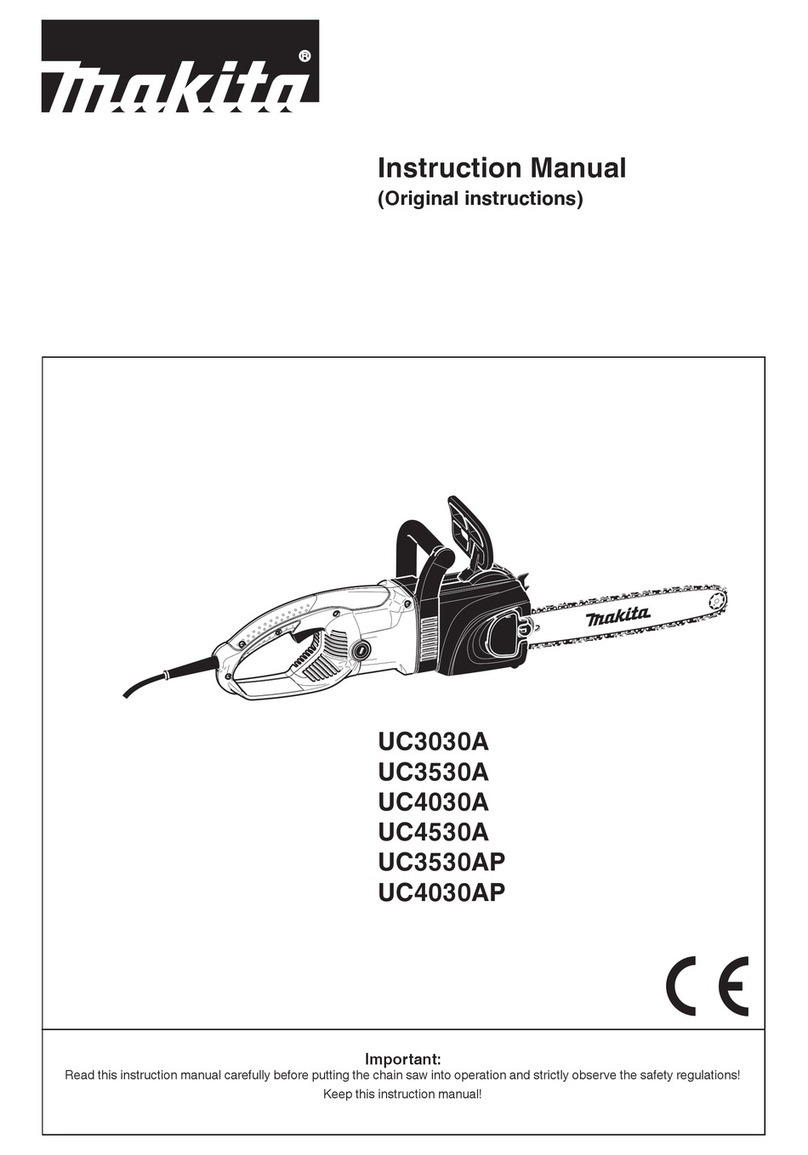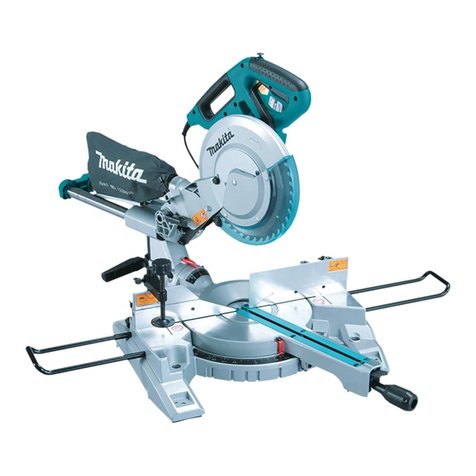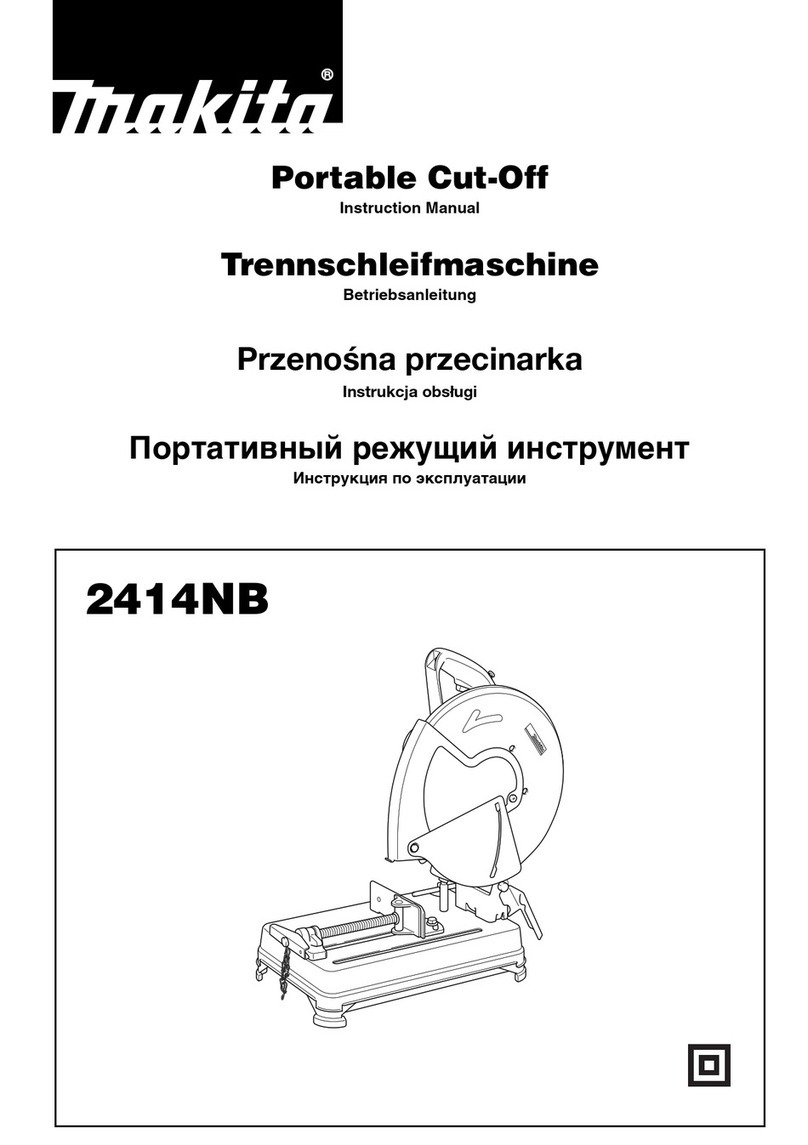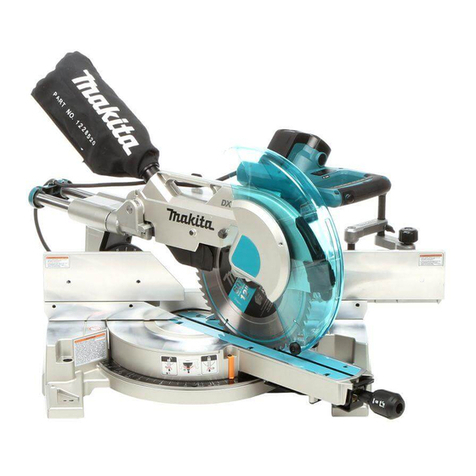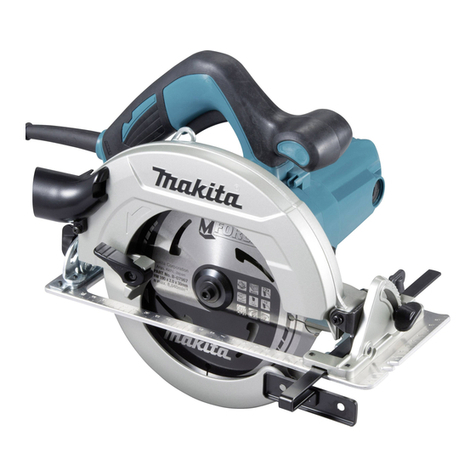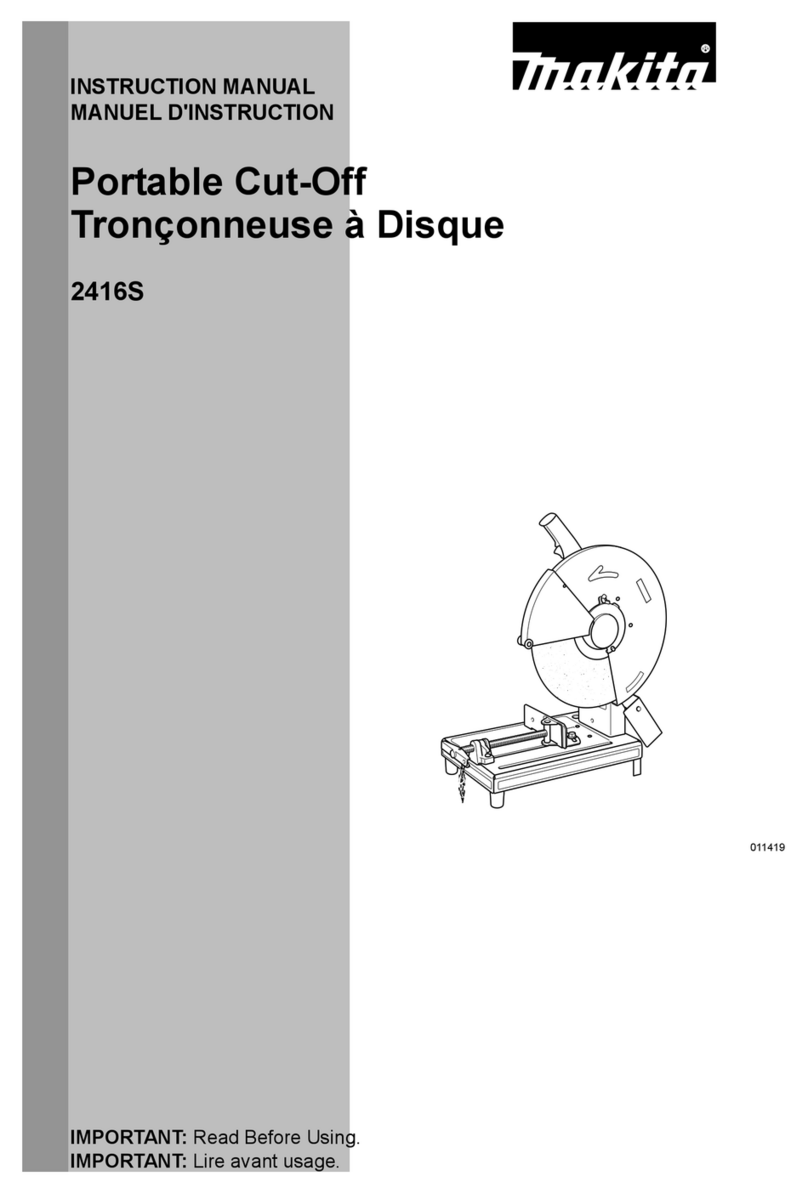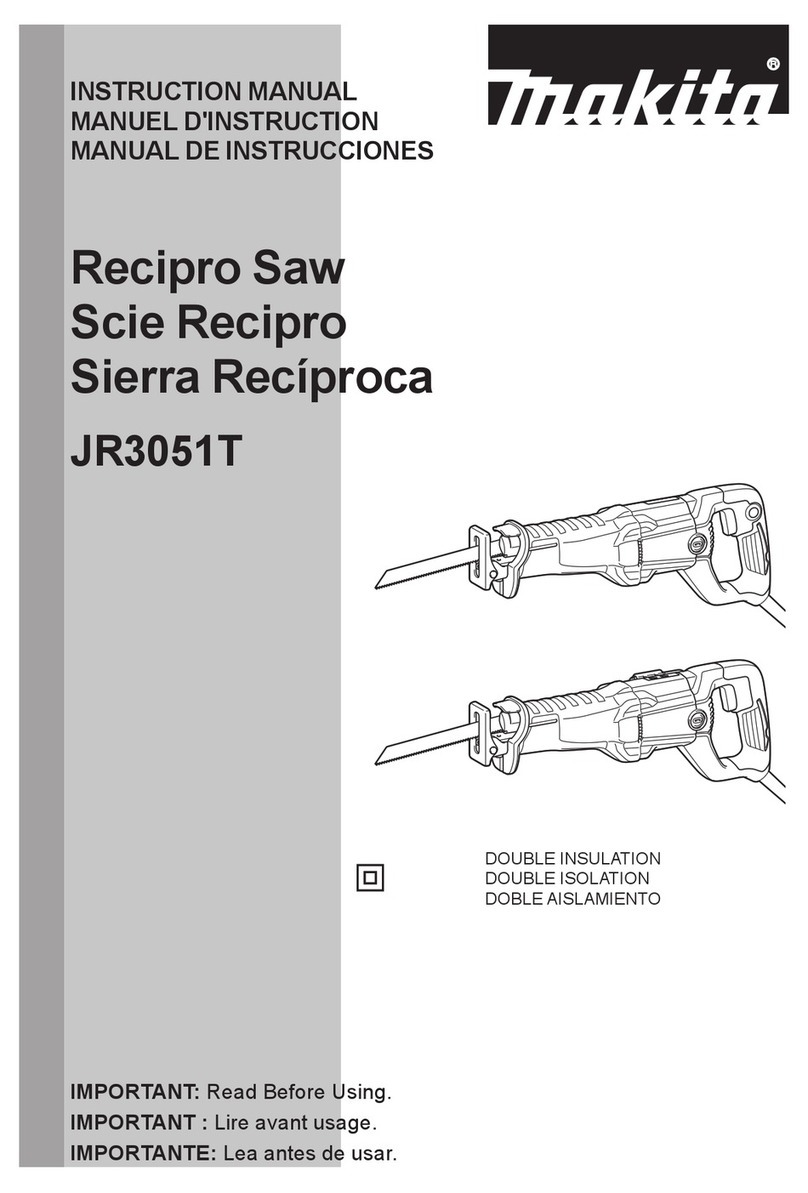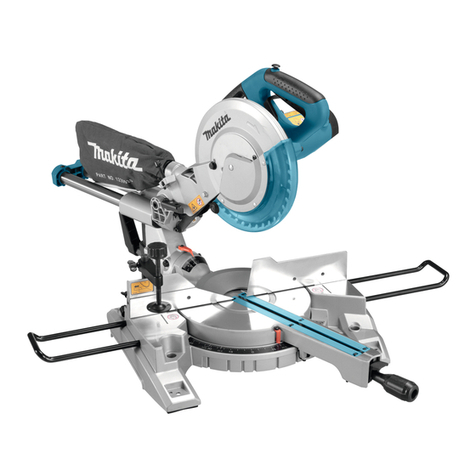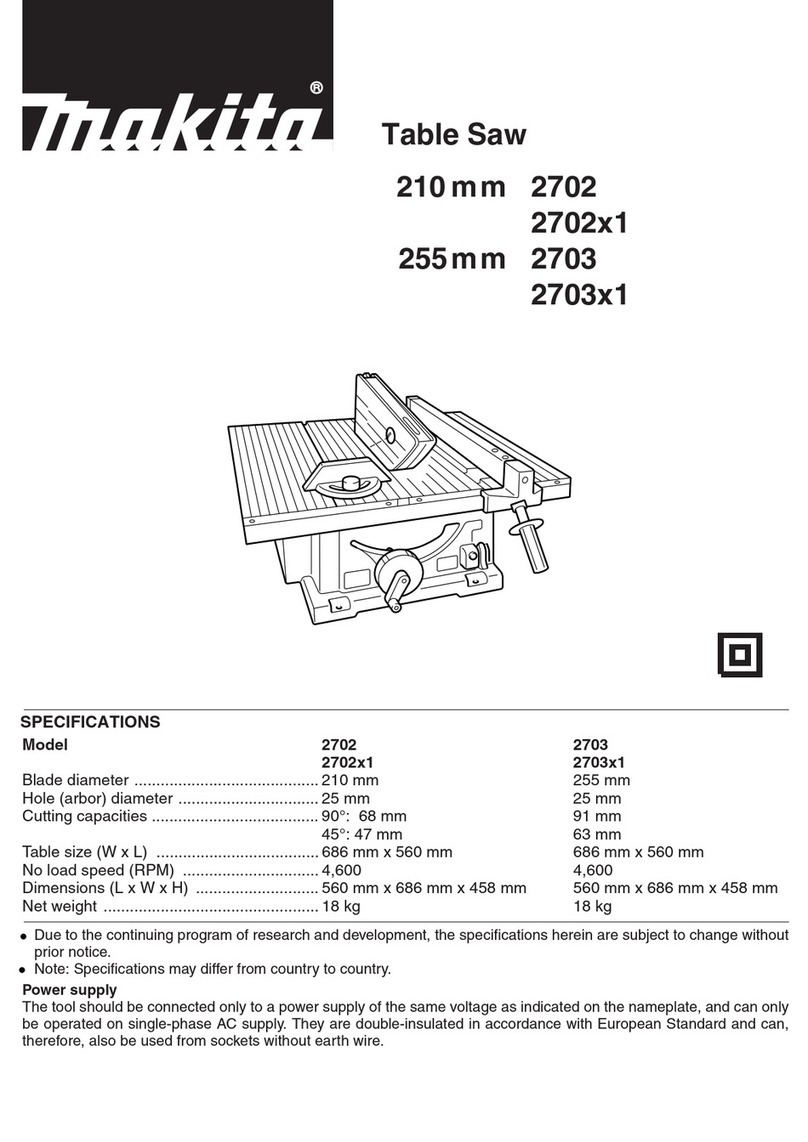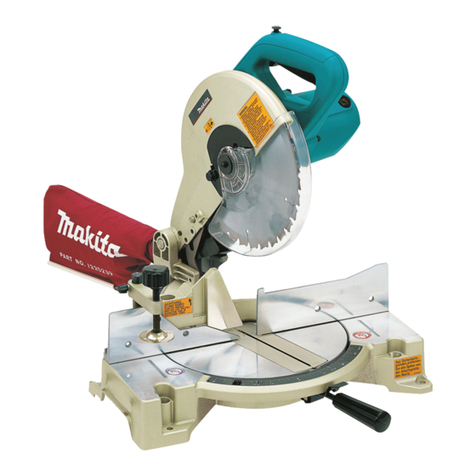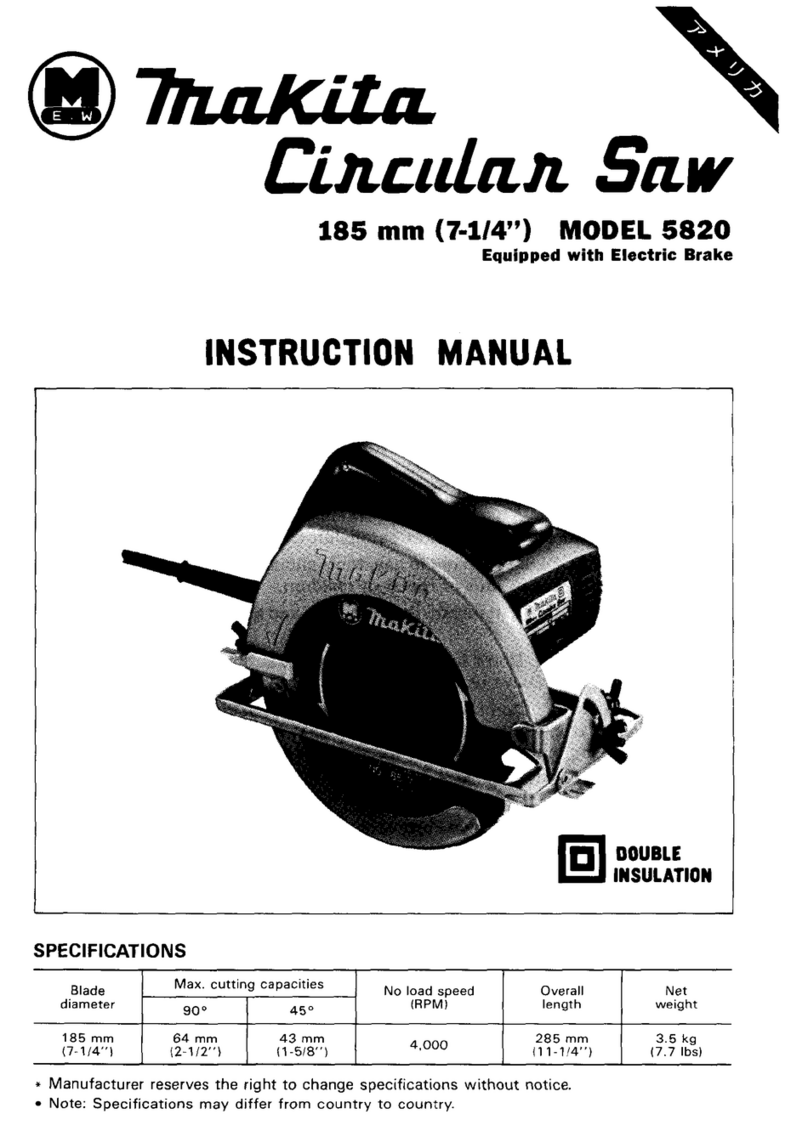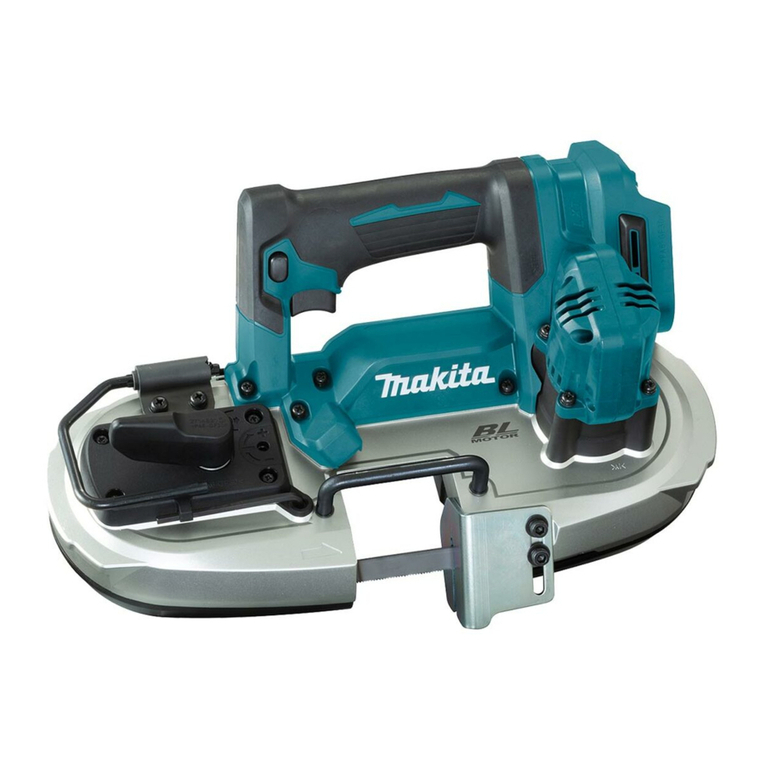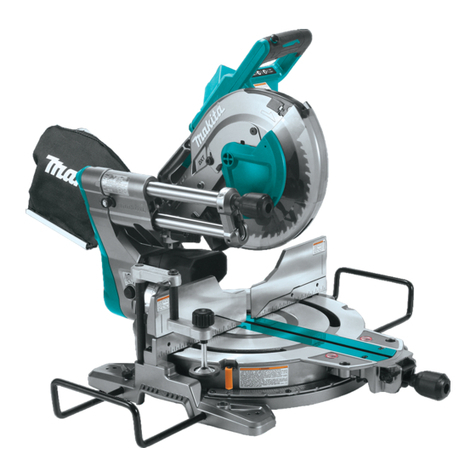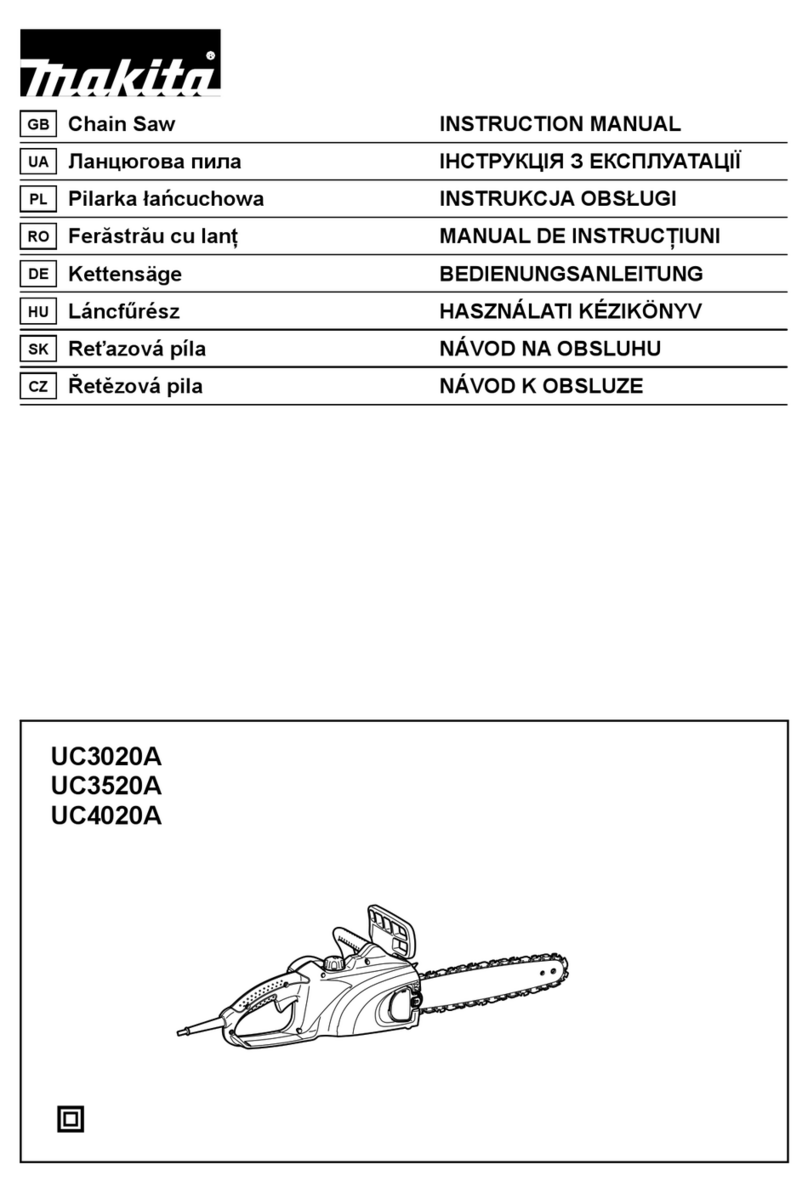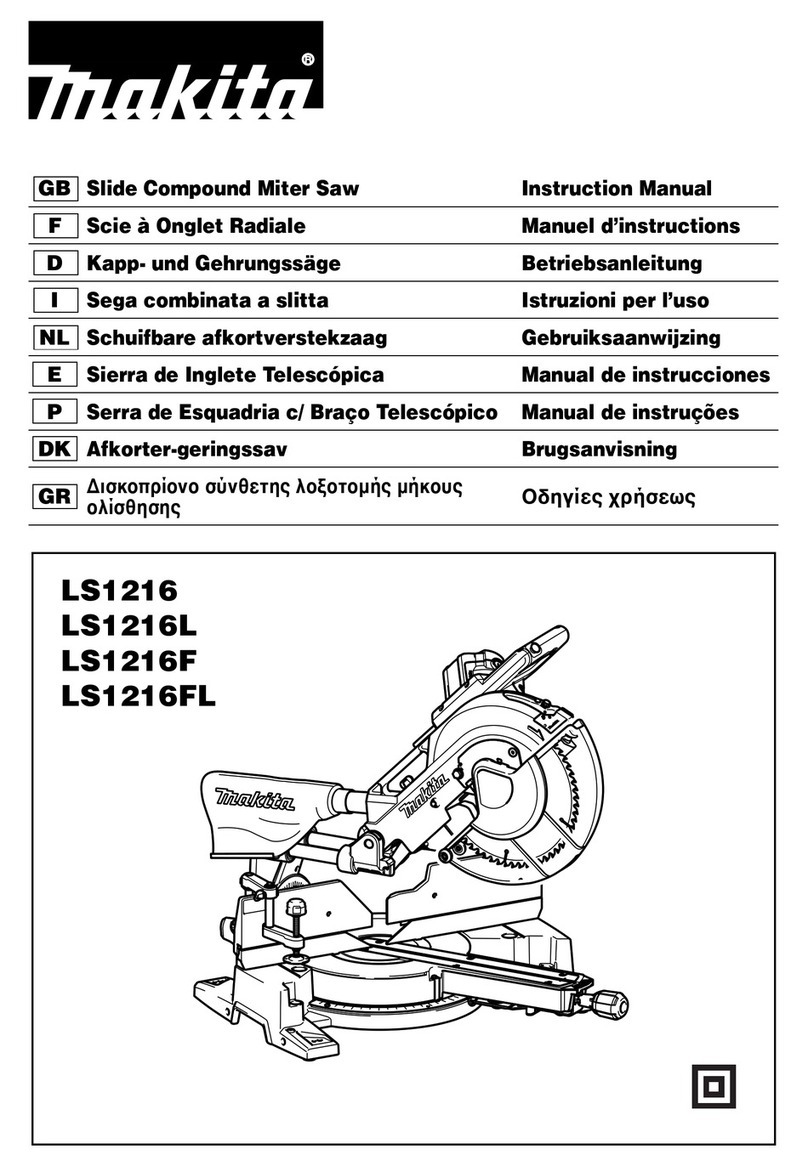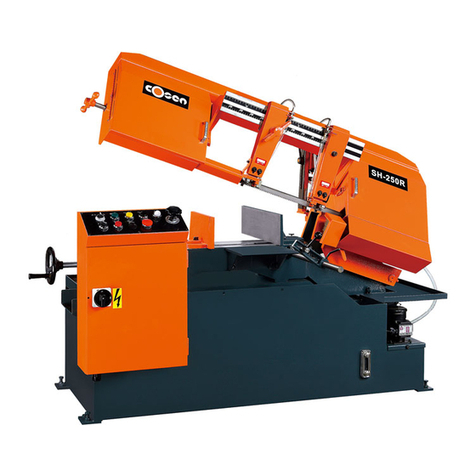
9ENGLISH
5. Maintain power tools and accessories. Check
for misalignment or binding of moving parts,
breakage of parts and any other condition that
-
aged, have the power tool repaired before use.
Manyaccidentsarecausedbypoorlymaintained
power tools.
6. Keep cutting tools sharp and clean.Properly
maintained cutting tools with sharp cutting edges
arelesslikelytobindandareeasiertocontrol.
7. Use the power tool, accessories and tool bits
etc. in accordance with these instructions, tak-
ing into account the working conditions and
the work to be performed. Use of the power tool
foroperationsdierentfromthoseintendedcould
result in a hazardous situation.
8. Keep handles and grasping surfaces dry,
clean and free from oil and grease.Slippery
handles and grasping surfaces do not allow for
safe handling and control of the tool in unexpected
situations.
9. When using the tool, do not wear cloth work
gloves which may be entangled. The entangle-
mentofclothworkglovesinthemovingpartsmay
resultinpersonalinjury.
Battery tool use and care
1.
the manufacturer. A charger that is suitable for
onetypeofbatterypackmaycreateariskofre
whenusedwithanotherbatterypack.
2. -
nated battery packs.Useofanyotherbattery
packsmaycreateariskofinjuryandre.
3. When battery pack is not in use, keep it away
from other metal objects, like paper clips,
coins, keys, nails, screws or other small metal
objects, that can make a connection from one
terminal to another.Shortingthebatterytermi-
nalstogethermaycauseburnsorare.
4. Under abusive conditions, liquid may be
ejected from the battery; avoid contact. If con-
liquid contacts eyes, additionally seek medical
help.Liquidejectedfromthebatterymaycause
irritation or burns.
5. Do not use a battery pack or tool that is dam-
Damagedormodiedbatteries
mayexhibitunpredictablebehaviourresultingin
re,explosionorriskofinjury.
6.
excessive temperature.Exposuretoreortem-
peratureabove130°Cmaycauseexplosion.
7. Follow all charging instructions and do not
charge the battery pack or tool outside the
-
tions.Chargingimproperlyorattemperatures
outsidethespeciedrangemaydamagethe
batteryandincreasetheriskofre.
Service
1.
repair person using only identical replacement
parts.Thiswillensurethatthesafetyofthepower
tool is maintained.
2. Never service damaged battery packs. Service
ofbatterypacksshouldonlybeperformedbythe
manufacturer or authorized service providers.
3. Follow instruction for lubricating and chang-
ing accessories.
Rotary scissors safety warnings
The term “machine” in the warnings and precautions
refertothecombinationoftherotaryscissorsandthe
power unit.
The term “motor” in the warnings and precautions refers
to the engine or electric motor of the power unit.
General safety
1. First-time or inexperienced operator should
ask the dealer for training in all operation of
the machine. Never allow children, persons
with reduced physical, sensory or mental
capabilities or lack of experience and knowl-
edge or people unfamiliar with the instructions
to use the machine.
2. It is recommended only to lend the machine
to people who have proven to be experienced.
Always hand over the instruction manual.
3. Stay alert, watch what you are doing and use
common sense when operating the machine.
Do not use the machine while you are tired,
medication. A moment of inattention while oper-
atingthemachinemayresultinseriouspersonal
injury.
4. Avoid using the machine in bad weather
conditions especially when there is a risk of
lightning.
5. Follow your national and local regulation for
use of outdoor power machines.
Intended use of machine
This machine is only intended for cutting grass,
weeds, bushes and undergrowth. Never use the
machine for any other purpose. Use for unintended
purposemayresultinseriousinjury.
Personal protective equipment
1. Always wear heavy, long pants, sturdy boots,
gloves, and a long-sleeve shirt. Do not wear
loose clothing, jewelry, short pants, sandals,
or go barefoot. Secure hair so it is above
shoulder level.
2. Always wear a helmet where there is a risk of
falling objects.
3.
Exposure to noise can cause hearing loss.
4. Always wear sturdy shoes with a non-slip
sole.Thisprotectsyourfeetagainstinjuriesand
ensures a good footing.
5. Wear a dust mask as necessary.
